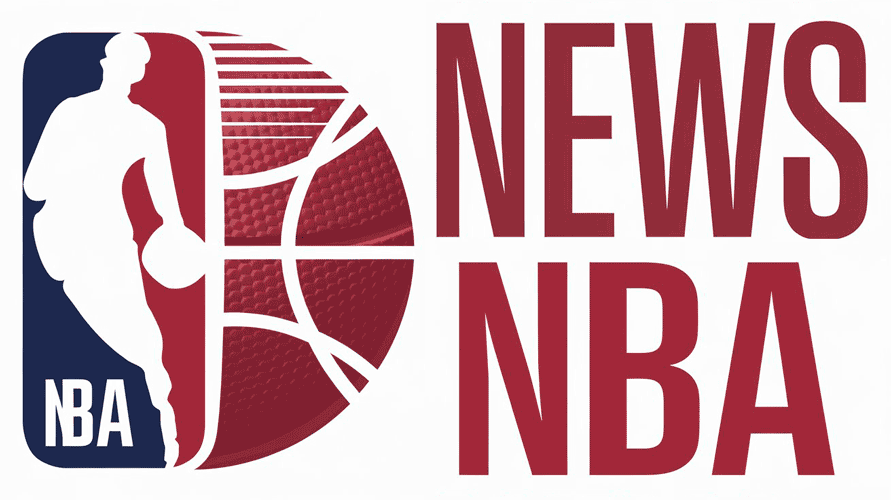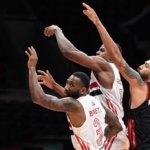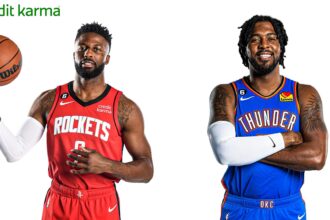The Minnesota Timberwolves suffered another setback on Tuesday night, falling to the Denver Nuggets and extending their losing streak to 0-5 against teams with winning records this season. Despite efforts to keep pace, the Timberwolves struggled to overcome a strong Denver squad, underscoring ongoing challenges as they seek to establish consistency against top-tier opponents. This latest defeat adds pressure on Minnesota to turn the tide as the season progresses.
Timberwolves Struggle to Close Gap Against Top Competition
The Minnesota Timberwolves once again found themselves unable to make significant inroads against a formidable opponent, dropping their fifth straight game to teams with winning records after a 112-99 loss to the Denver Nuggets. Despite flashes of resilience and effort on both ends of the floor, Minnesota’s defense struggled to contain Denver’s dynamic offense, allowing multiple runs that ultimately sealed the Wolves’ fate. The team’s offensive execution lacked consistency, with several key players missing crucial shots during pivotal moments.
Key factors contributing to the Wolves’ ongoing difficulties against quality competition include:
- Defensive breakdowns in the paint and on the perimeter, leading to easy baskets.
- Inconsistent shooting, particularly from beyond the arc where Minnesota fell well below their season average.
- Turnover troubles, which disrupted offensive rhythm and fueled Denver’s fast breaks.
As the Timberwolves look to close this daunting performance gap, coaching staff and players alike will need to reassess strategies and execution against top-tier opponents to reverse the trend.
| Category | Timberwolves | Denver Nuggets |
|---|---|---|
| Points | 99 | 112 |
| 3PT % | 28% | 42% |
| Turnovers | 15 | 9 |
| Rebounds | 42 | 47 |
Analyzing Denver’s Defensive Strategies That Stifled Minnesota’s Offense
Denver’s defensive game plan was executed with precision, effectively neutralizing the Timberwolves’ offensive weapons. The Nuggets employed aggressive perimeter pressure, forcing Minnesota’s guards into rushed shots and off-balance passes. This strategy was particularly evident in the first half, where Denver’s defenders seamlessly rotated to contest every shot, limiting open looks and holding Minnesota to a shooting percentage well below their season average. The use of double-teams on Karl-Anthony Towns disrupted the Timberwolves’ inside-out game, forcing secondary scorers to carry the offensive load under intense scrutiny.
Moreover, Denver’s ability to control the boards added another layer of difficulty for Minnesota. Quick transitions from defense to offense were fueled by several key steals and blocks, showcasing Denver’s commitment to a high-energy defensive approach. Below is a concise breakdown of Denver’s defensive impact on Minnesota’s offensive output:
| Stat Category | Denver Defense | Minnesota Offense |
|---|---|---|
| Points Allowed in Paint | 36 | 20 |
| Forced Turnovers | 15 | 15 |
| 3PT% Allowed | 32% | 38% |
| Second-Chance Points | 8 | 5 |
Key Areas for Improvement as Timberwolves Seek First Win Over Winning Teams
The Timberwolves continue to face challenges when competing against teams with winning records, highlighting several crucial areas that require immediate attention. Defensive intensity remains inconsistent, particularly on the perimeter where opposing shooters find too much space. Additionally, the team’s rebounding struggles have allowed opponents to dominate second-chance opportunities, undermining Minnesota’s efforts to control the pace and flow. Improving communication on defensive rotations and boxing out aggressively must be prioritized to close this gap.
On the offensive end, the Timberwolves have shown flashes of brilliance but often lack cohesion during critical stretches. Ball movement tends to stagnate, leading to predictability and contested shots rather than open looks. To change their fortunes, they must embrace a more unselfish approach and refine their pick-and-roll execution. Below is a summary of the Timberwolves’ key statistical shortcomings against winning teams this season:
| Category | Timberwolves | Opponents (Winning Teams) |
|---|---|---|
| Defensive FG % Allowed | 47.8% | 43.2% |
| Offensive Rebounds per Game | 9.3 | 12.1 |
| Assist-to-Turnover Ratio | 1.2 | 1.8 |
To Conclude
With their fifth consecutive loss against teams holding winning records, the Timberwolves face mounting pressure to adjust their approach as they seek to turn the season around. As the challenges continue, the team will look to regroup and find answers in upcoming matchups against tough opponents. Fans and analysts alike will be watching closely to see if Minnesota can break the trend and start delivering results against elite competition.













